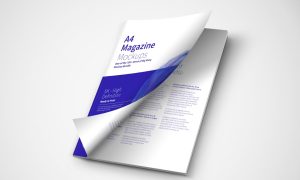جمع جزء: تومان 302,400
What Affects Erosion Resistance Of Refractory Castables?
چه چیزی مقاومت به فرسایش جرم های ریختنی دیرگداز را تحت تأثیر قرار می دهد؟
ABSTRACT
The wear of refractory linings is often a critical problem in process units where transfer lines are subjected to high velocity gas stream containing solid particles. Knowledge regarding erosive wear of refractory linings under these conditions is restricted and, as consequence, the technological development is slow and, in general, carried out in an empirical way. The objective of the present work is to review relevant aspects related to erosive wear in industrial applications and to investigate the erosion resistance of refractory castables currently used by the aluminum industry and in petrochemical cracking units. Among the erosion variables tested are: the particle impingement angle, line pressure, particle size and hardness, the microstructure of the refractories, the binding agent content, type of aggregate, thermal history and porosity. It was found that the higher erosion was attained at 90º of impingement and decreased slightly when the angle was close to 30º. The results also pointed out that erosion was proportional to the particle velocity, its hardness and size. In addition, it was observed that the refractory erosion resistance is mostly affected by reducing the porosity.
![]() جهت دانلود رایگان نسخه لاتین این مقاله اینجا کلیک کنید .
جهت دانلود رایگان نسخه لاتین این مقاله اینجا کلیک کنید .

چکیده
سایش آسترهای دیرگداز، اغلب در واحدهایی مشکل بحرانی به حساب می آید که در آنها لوله های انتقال، با جریان های گاز سرعت بالا و محتوی ذرات جامد، مواجه می شوند. دانش مربوط به سایش فرسایشی آسترهای دیرگداز تحت این شرایط محدود بوده و در نتیجه، توسعه فناوری آرام می باشد و به طور کلی، از طریق تجربه انجام می گیرد.
هدف پژوهش اخیر، مرور جنبه های مرتبط با سایش فرسایشی در کاربردهای صنعتی و بررسی مقاومت به فرسایش جرم های ریختنی دیرگداز است که در حال حاضر در صنعت آلومینیوم و واحدهای کراکنیگ پتروشیمی مورد استفاده قرار می گیرند. از جمله متغیرهای فرسایش مورد آزمایش قرار گرفته عبارتند از: زاویه اصابت ذره، فشار خطی، اندازه ذرات و سختی، ریزساختار دیرگدازها، میزان عامل اتصال، نوع اگریگیت، تاریخچه حرارتی و تخلخل.
مشخص شد که فرسایش بالاتر در زاویه اصابت 90 درجه بدست آمده و وقتی زاویه مذکور به نزدیکی 30 درجه رسید، سایش به آرامی کاهش یافت. نتایج همچنین نشان دادند که سایش با سرعت، سختی و اندازه ذرات نیز متناسب است. به علاوه، مشاهده شد که مقاومت به سایش دیرگداز، اساساً از کاهش تخلخل تأثیر می پذیرد.
![]() جهت دانلود ترجمه تخصصی و فارسی این مقاله می توانید وجه آنرا پرداخت نموده و بلافاصله دریافت نمایید.
جهت دانلود ترجمه تخصصی و فارسی این مقاله می توانید وجه آنرا پرداخت نموده و بلافاصله دریافت نمایید.







نقد و بررسیها
هنوز بررسیای ثبت نشده است.